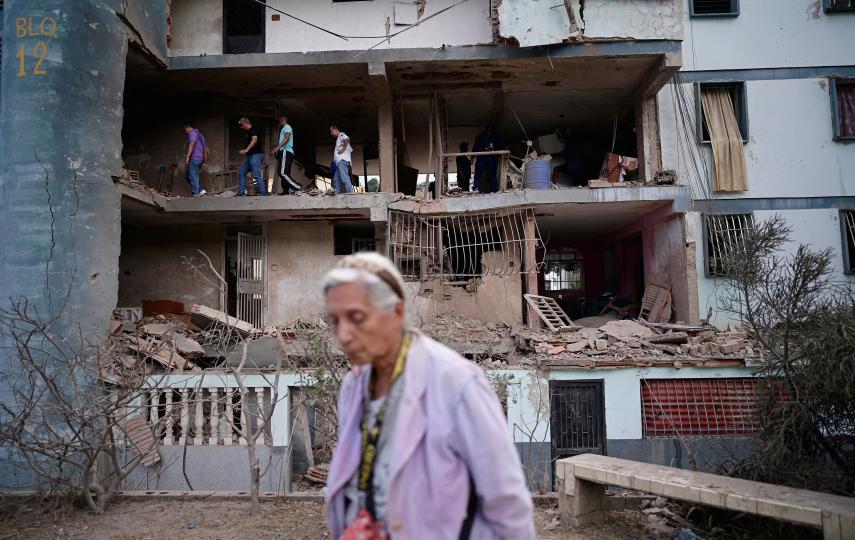GABORONE
Botswana's cattle owners are still trying to come to terms with two successive outbreaks of foot-and-mouth disease (FMD) that resulted in the destruction of thousands of livestock to contain the virus.
The cattle industry once ranked alongside diamond mining as a top income earner, but the FMD outbreaks in 2002/03 froze beef exports to the European Union (EU) and emerging markets.
The real victims are the 3,000 people who depend on livestock herding in northeastern Botswana, near the Zimbabwe border. Trevor Molapisi is one of them.
"I have been a herdsman for 28 years and I have no other skills to live on," he told IRIN. "I am not sure as to how I will sustain my family - cattle herding was my way of life."
Since the FMD outbreak, Tyson Dube has turned to selling firewood for a living, but it has been a difficult transition.
"People no longer buy firewood because [they now have] electricity," he said wiping the sweat from his forehead in the midday heat. "I have been up since 5:30 [a.m.] but have not been lucky."
Any hope Molapisi and Dube might have had of returning to their former jobs has faded, as most cattle owners in the area have opted for cash compensation for the livestock culled, instead of restocking, for fear of another FMD outbreak.
A total of 12,197 cattle in northeastern Botswana were destroyed in the outbreak in 2002, and another 3,864 the following year.
"While the outbreak in 2003 was less severe in terms of numbers [of cattle infected], the socioeconomic impact was a lot worse," said Kekgonne Baipoledi, head of the national veterinary laboratory. "Farmers and villages, still trying to recover from the previous outbreak, did not have the means to cope with yet another outbreak," he explained.
The Kalahari desert covers much of Botswana, and an arid arc of land in the north is only really suitable for ranching.
Inevitably, FMD affected not only herdsmen and owners, but thousands of people employed in abattoirs, local butcheries and plants processing meat for export.
FMD, a viral disease that affects all cloven-hoofed domestic and wild animals, first appeared in northeastern Botswana in 2002, but was quickly brought under control.
Following the 2003 outbreak, Botswana lost its FMD-free status, awarded by the International Animal Health Organisation, which it had attained in 2001.
The ministry of agriculture said 5,500 heifers and 500 bulls, to be shared among the over 60 farmers whose herds were destroyed, were supplied by the government in a restocking programme.
"I am not sure if I will be able to restock my herd to the previous number," said Morgan Ngwato, a farmer who lost 120 cattle. "I only got 20 cattle, and I am wondering if I still need employees."
According to Irene Dema of the labour statistics unit in the agriculture ministry, the cattle ranching sector was the fastest growing employer in the country, accounting for 6,264 people at September 2001. "Latest statistics are not available, but the FMD outbreak eroded the fortunes of the sector," she said.
The Botswana government pointed accusing fingers at its northern neighbour, Zimbabwe, as the source of the pestilence, because it struggled to source the chemicals for dipping to prevent the spread of the highly contagious disease.
Last year, Pelokgale Seloma, the then assistant agricultural minister, lashed out at "irresponsible" villagers at a meeting in the border village of Matsiloje, accusing them of buying cheap cattle in Zimbabwe and driving them into Botswana.
"Your irresponsible behaviour ... has brought you into this mess. This outbreak is your fault," he said.
Botswana officials say illegal Zimbabwean immigrants entering the country through undesignated entry points are also spreading the disease.
The solution could lie in speeding up the construction and electrification of a 2.4 metre high fence between the two countries to reduce the influx of illegal border jumpers and livestock smuggling.
But Motshudi Raborokgwe, executive secretary of the Botswana Meat Commission, suggested the government should rather enforce the 1991 Fencing Policy that calls for the construction of barriers to separate grazing land from human settlements.
This article was produced by IRIN News while it was part of the United Nations Office for the Coordination of Humanitarian Affairs. Please send queries on copyright or liability to the UN. For more information: https://shop.un.org/rights-permissions




